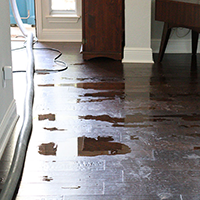Stopping Water Damage in the Bathroom
Free QuoteWhat are your ideas with regards to Looking for Signs of Water Damage in the Bathroom?

The bathroom is extremely vulnerable for moist accumulation and also possible water damages as a result of the constant use water in it. This post uses easy evaluation techniques to help detecting water damage threats.
The constant use water in the shower room makes it incredibly susceptible for moist buildup and also prospective water damage. By examining it routinely, you can reduce water relevant problems.
The complying with set of assessments is easy to perform and also must be done when in every three months in order to maintain your shower room in good shape and to stop prospective water damages caused by the bath tub, the shower, pipe joints and plumbing, sinks, closets, as well as the toilet
Do not forget doing these evaluations and be detailed while doing them. Keep in mind that these simple assessments can save you a great deal of cash by providing very early indicators for water damage
Sinks as well as Cabinets
Sinks and closets are subjected to moisture as well as humidity day-to-day as well as are often ignored. Examine consistently under the sink and on the kitchen counter above it. Fix any type of drip in the catch as it may recommend drain troubles. Browse the sink, slow-moving draining pipes might indicate an obstructed drain. Change sink seals if they are cracked or loosened.
Bathtub as well as Shower
The shower and tub require special focus as well as upkeep. Check the ceramic tiles and change if fractured. Ensure that there is no missing out on grout in between the tiles. Examine and also replace split caulking at joints where the walls satisfy the flooring or the bathtub. Blocked drains pipes and pipelines troubles will stop the bath tub from drying as well as might indicate severe troubles below the tub. Consult with a professional promptly to prevent structural damages. Take notice of discolorations or soft areas around the bath tub wall surfaces as they may suggest an inner leakage.
Plumbing
Signs for water damage are difficult to find given that the majority of pipes are installed inside the wall surfaces.
Pay unique focus to flooring as well as walls moisture as well as spots as they might show an unnoticeable plumbing issue. Inspect dampness degrees in adjoining rooms also.
The Bathroom
The commode is an at risk water joint. Examine the water lines and search for leaks around the bathroom seat, in the pipe, as well as under the water container. If you identify any signs of moisture on the floor around the bathroom, check for leaks in the toilet edge as well as container seals.
Realize that hanging commode dish antiperspirants raises the chances for clogs.
Water Damage Signs In The Bathroom To Avoid Cleanup
Musty smell
This is one of the easiest signs to catch because musty smells are so odorous. The damp, earthy, moldy smell should be a big red flag. The smell will develop when moisture gets trapped in surfaces, and begins to facilitate mold growth. Leaking pipes under cabinets, inside walls, and behind shower fixtures will cause moisture to stay trapped and not dry, which will lead to mold growth and spread. As soon as you notice any musty smells in your bathroom, have it checked for hidden water damage and cleanup signs.
Visible mold
If the smell isn’t there to give it away, sometimes you will actually see mold growth. Finding mold in your bathroom is a serious problem, because mold is very harmful to your health. By the time mold growth is visible, it also means that water damage has already occurred and been present for some time. The only way the mold problem can be resolved is to find the source of the moisture and get it stopped. To safely and adequately remove mold, you need to have professionals handle the remediation. Do not waste any time in getting mold problems addressed, fixed, and sanitized so that you can protect you and your family from the many respiratory symptoms caused by mold exposure.
Damaged floors
Bathroom floors should be able to withstand some exposure to water while still remaining in good condition. However, when excess exposure or water leaks occur, they will begin to damage even the most water-resistant flooring. If you notice any cracking, bubbling, staining, or warping on your bathroom floors, there is probably a water leak somewhere causing the distortion. If you notice areas of the floor have become softer, or even have a spongy feeling, there is probably damage to the subfloor. Subflooring is typically made up of plywood. When plywood is exposed to water or moisture, it will absorb it. Once it has become saturated, the weight of the excess water will cause the wood to swell and soften. Check the floors in your bathroom frequently to catch any of these sings before they lead to damaged subflooring.
Changes on walls
When water leaks behind walls, it will cause changes in the drywall. Peeling plaster, blistering paint, and soggy wallpaper are all good indicators that excess water is building up behind the wall. Water leaking behind drywall will cause it to swell and be soft to the tough. If you start to notice gaps along the trim of your walls, or where tile meets the wall, it could also be a strong indicator that there is a leak behind the wall. Any changes, distortion, or damage on the walls should be evaluated as soon as you notice it to prevent further water damage and cleanup.

I am very eager about Common Causes of Water Damage in a Bathroom and I'm hoping you enjoyed the blog posting. Loved our post? Please share it. Let someone else check it out. Thanks for going through it.
Visit Our Site